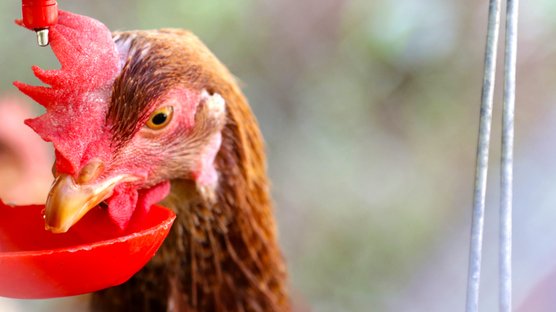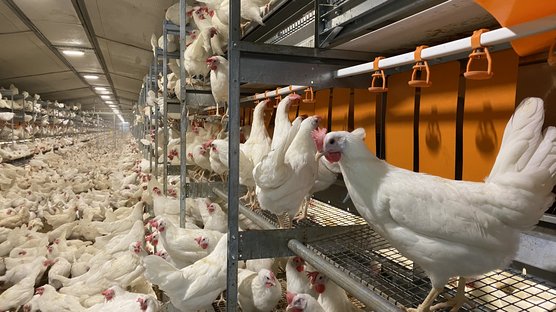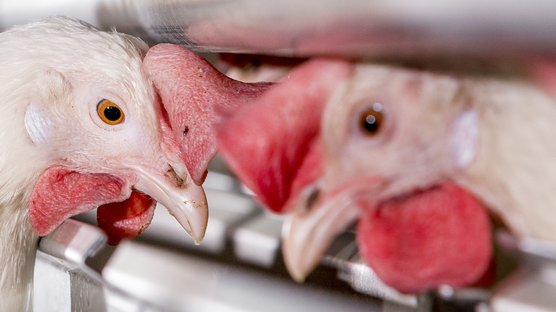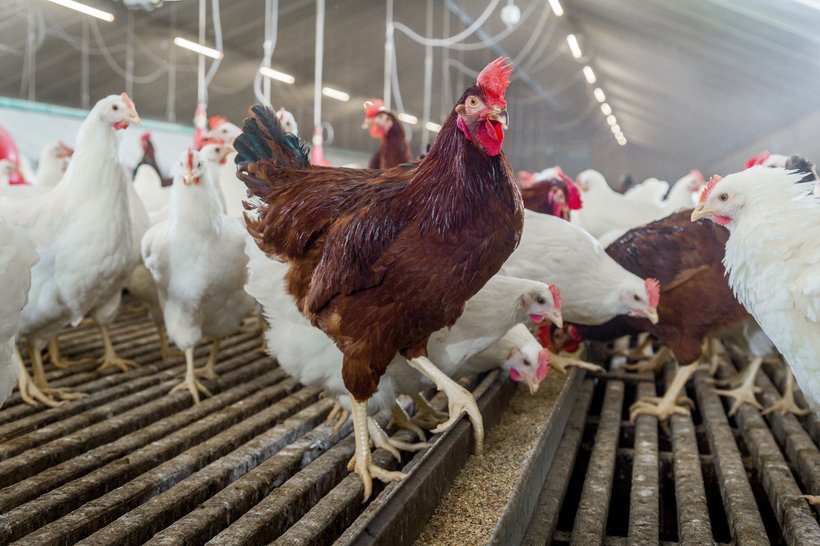
Published on Dec. 31, 2024
Focus Points to support hatchability in Laying Hen Breeders
For more than one century, laying hens have been selected and bred to further optimize egg production, during all this time, the nutrient composition of the egg has been kept rather stable (Cotterill, et al., 1977; Washburn, 1979; Central, 2024). In layer breeders the focus on the day-to-day breeder management is on maximizing chick quality and the number of chicks, rather than just maximizing the number of eggs.
At the moment of lay, the embryo consist of 30,000 – 60,000 cells (Eyal-Giladi & Kochav, 1976). Understanding the critical period of embryo development post-lay, helps in the understanding of the importance of meticulous egg handling, storage, and transportation to preserve the hatchability potential (Hendrix Genetics, 2019). While only first-grade eggs are suitable for hatching, disinfection protocols prior to incubation are essential to mitigate bacterial contamination and optimize hatchability outcomes. During incubation the egg temperature and egg weight loss is important, which can be affected by the various settings (humidity, ventilation and temperature) during incubation, but also by egg shell quality (Hendrix Genetics, 2019).
The egg serves as the primary source of nutrients for embryonic development, as in contrast to mammals, the developing embryo doesn’t receive any further nutrients during the developing stages. As the embryo needs to rely on the resources available in the hatching eggs. Therefore, the layer breeder diets form a crucial role in the deposition of nutrients, and at what level, in the hatching egg. For example, micronutrient deficiency (Surai, 2012; Nawab, et al., 2019) or mycotoxin contamination (Caballero, 2023) in breeder diets can have a negative influence on embryonic development and chick quality. Lipid peroxidation in the egg yolk results in a higher embryonic mortality (Nawab, et al., 2019). Some fat soluble antioxidants have the capability to increase the resistance for lipid peroxidation (Surai, et al., 2019), and so reduce embryonic mortality, this includes Selenium (Delezie, et al., 2014; Surai & Kochish, 2018), vitamin E (Surai, 2012; Surai, et al., 2019) and carotenoids (Surai, 2012). Further, having proper biosecurity measures in place to protect the feed of layer breeders is key to minimize the risk for a bacterial outbreak, like Salmonella (Schothorst Feed Research, 2024). Therefore it is advised to acidify the feed for layer breeders in combination with heat treatment of the feed.
Genetic selection plays a crucial role in breeding laying hens that are fit for the future. Pure Lines are selected for fertility and hatchability traits, but unfortunately the hatchability trait has a low heritability. Therefore, other traits like semen quality and semen quantity, but also mating behavior are taken into account. In general, the focus for female laying hen breeders the focus is on a good feather cover and production of first grade eggs. While the focus for male laying hen breeders is on sperm quality and quantity, body composition and behaviour. In contrast to broiler breeders, the body weight difference between males and females in layer breeders is limited, for white layer breeders 400 grams body weight difference at 30 weeks of age (Hendrix Genetics, 2024). As a result, the males and females are fed with the same feeding system and fed with the same diets in both rearing as well as production.
The highest mating frequency is in the afternoon, 13 to 15 hours after lights on (Duncan, et al., 1990), during this period it is recommended to prevent disturbances to the flock, like feeding moments. Frequency of mating is reducing by age (Duncan, et al., 1990) and the sperm can be stored in the sperm storage glands up to 3 weeks. Finding the right balance in the male : female ratio will help to improve the fertility (Hendrix Genetics, 2022). Adding more males in case of low fertility is in most cases not the most effective strategy. Females can get stressed by too many matings, they might loose their back-feathers, resulting in too painful and stressful mating experiences. It is important that both the roosters and hens stay in good condition.
Effective management practices, particularly during the rearing phase, are highlighted as fundamental for developing robust pullets and defining the age of sexual maturity. Investments in rearing are often underscored, but contribute largely to the reproductive success of layer breeders. While proper environmental control and disease prevention measures are emphasized to minimize stress and maximize fertility.
In conclusion, layer breeder fertility and hatching egg hatchability can be optimized via a holistic approach, including nutrition, management, genetics, biosecurity and sanity and egg handling management.
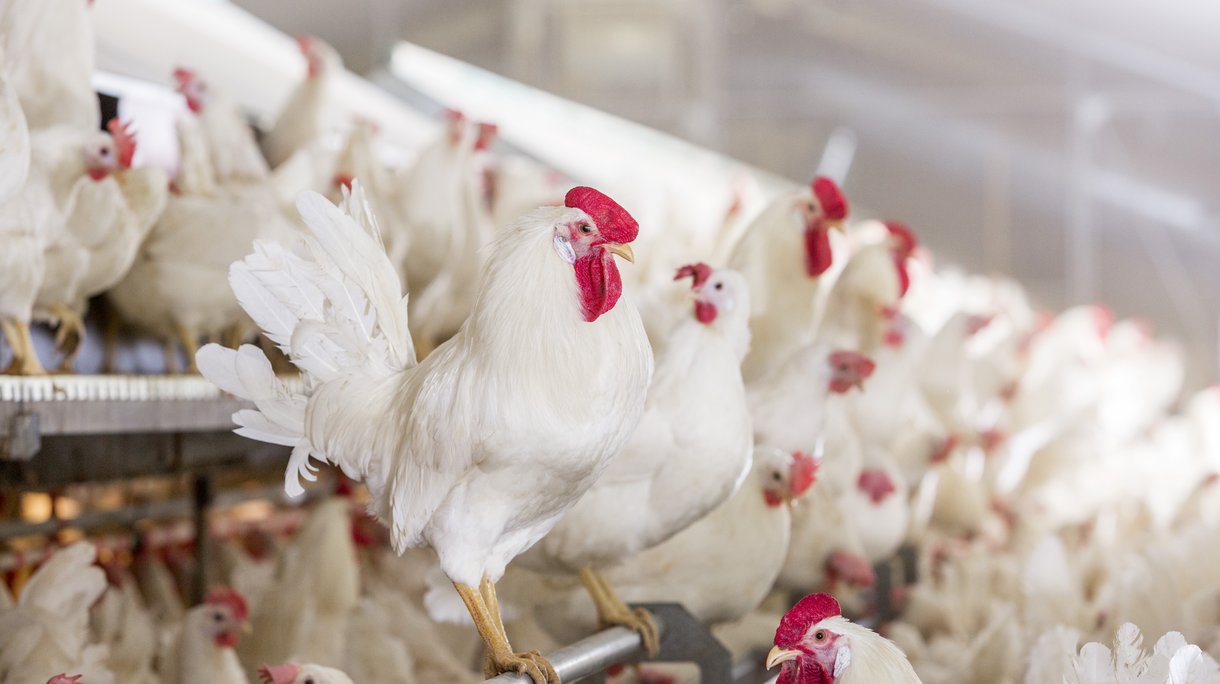
References
- Caballero, M., 2023. [Online]
Available at: https://ew-nutrition.com/mycotoxins-layer-breeder-feed-impact-hens-eggs-hatchery-chicks/ - Central, F., 2024. Egg, whole, raw, fresh. [Online]
Available at: https://fdc.nal.usda.gov/fdc-app.html#/food-details/171287/nutrients - Cotterill, O., Marion, W. & Naber, E., 1977. A nutrient re-evaluation of shell eggs. Poultry Science, Volume 56, pp. 1927-1934.
- Delezie, E. et al., 2014. Comparing responses to different selenium sources and dosages in laying hens. Poultry Science, Volume 93, pp. 3083-3090.
- Duncan, I., Hocking, P. & Seawright, E., 1990. Sexual behaviour and fertility in broiler breeder domestic fowl. Applied Animal Behaviour Science, 26(3), pp. 201-213.
- Eyal-Giladi, H. & Kochav, S., 1976. From cleavage to primitive streak formation: A complementary normal table and a new look at the first stages of the development of the chick: I. General morphology. Developmental Biology, 49(2), pp. 321-337.
- Hendrix Genetics, 2019. Hatchery Management Guide. Boxmeer: Hendrix Genetics.
- Hendrix Genetics, 2022. Management Guide Parent Stock. Boxmeer: Hendrix Genetics.
- Hendrix Genetics, 2024. Dekalb White Parent Stock guide. In: Boxmeer: s.n.
- Nawab, A. et al., 2019. Vitamin E and Fertility in the Poultry Birds; Deficiency of Vitamin E and its Hazardous Effects. Approaches in Poultry, Dairy & Veterinary Sciences, 6(1).
- Schothorst Feed Research, 2024. Early Prevention of Salmonella Contamination in Poultry: The Feed Mill Role. November.
- Surai, P., 2012. The antioxidant propoerties of canthaxanthin and its potential effects in the poultry eggs and on embryonic development of the chick. Part 2.. World's Poultry Science Journal, Volume 68.
- Surai, P. F. & Kochish, I. I., 2018. Nutritional modulation of the antioxidant capacities in poultry: the case of selenium. Poultry Science, Volume 0, pp. 1-18.
- Surai, P. F., Kochish, I. I., Romanov, M. N. & Griffin, D. K., 2019. Nutritional modulation of the antioxidant capacities in poultry: the case of vitamin E. Poultry Science, Volume 0, pp. 1-12.
- Washburn, K., 1979. Genetic Variation in the Chemical Composition of the Egg. Poultry Science, Volume 58, pp. 529-535.

